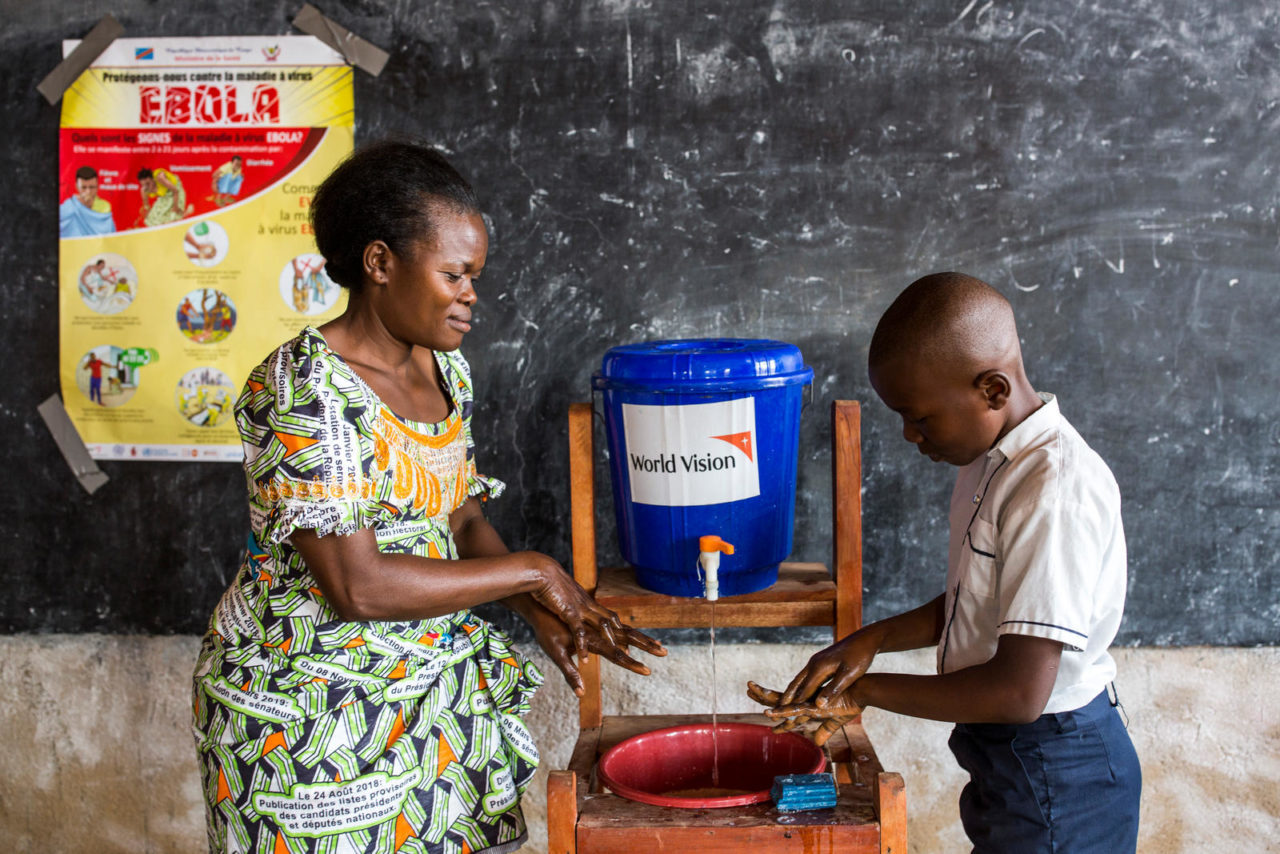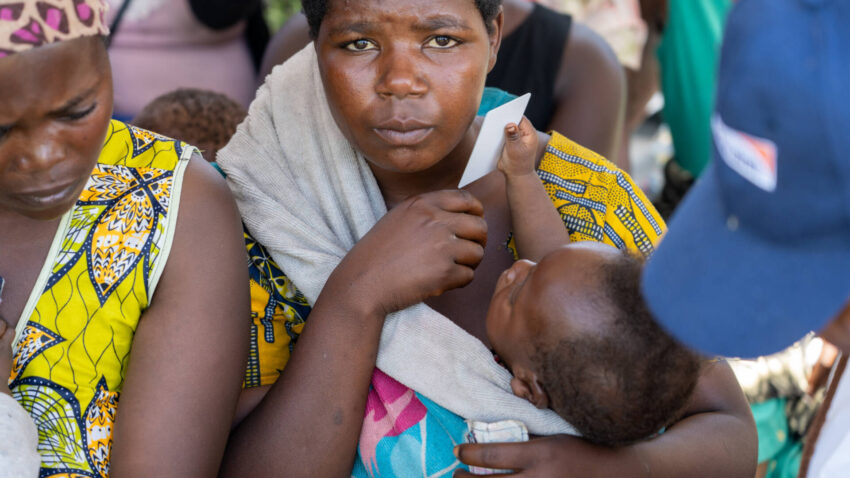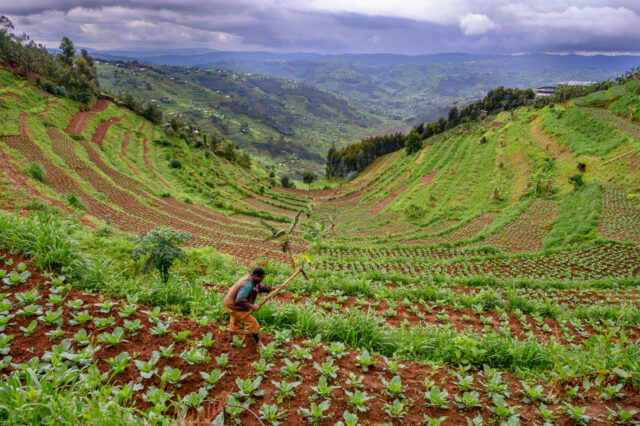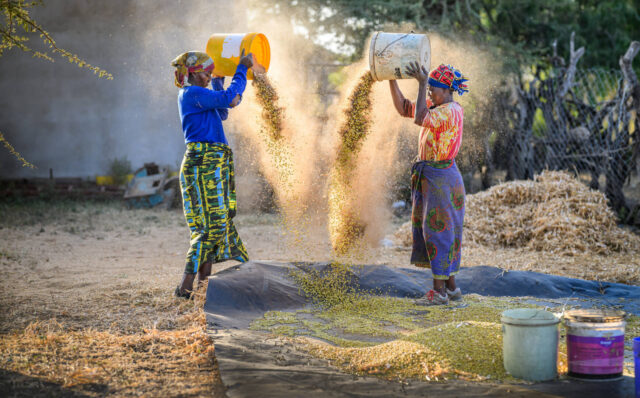The Democratic Republic of the Congo (DRC) is facing a complex and prolonged crisis, with over 15 million children suffering the impacts of armed conflict, hunger, and disease outbreaks. The humanitarian situation is rapidly deteriorating due to a recent surge of violence, leading to a rise in food insecurity and widespread displacement across the region.
DRC conflict: Facts, FAQs, and how to help
Explore facts and FAQs about the crisis in the DRC, and learn how you can help.
- Fast facts: DRC situation and conflict
- What has happened recently in the DRC?
- How are conditions in the DRC affecting children?
- What are some of the greatest needs of people in the DRC?
- What is World Vision doing to help vulnerable people in the DRC?
- How can I help affected children and families in the DRC?
- Timeline of events in the DRC
Fast facts: DRC situation and conflict
- The Democratic Republic of the Congo, which spans an area comparable to Western Europe, is the second-largest country on the African continent and sits on the equator.
- The DRC shares its borders with nine neighboring countries: Angola, Burundi, the Central African Republic, the Republic of the Congo, Rwanda, South Sudan, Tanzania, Uganda, and Zambia.
- The DRC is one of the five poorest nations in the world, despite its abundance of natural resources.
- Since gaining independence in 1960, the DRC has experienced persistent hostilities.
- In 2022, a surge in violence in the eastern provinces of Ituri, North Kivu, and South Kivu exacerbated insecurity in the DRC, causing extensive internal displacement and substantial loss of life.
- More than 26 million people need humanitarian aid, according to the United Nations.
- According to the U.N. Refugee Agency (UNHCR), 5.5 million people have been displaced within the DRC due to conflict as of December 2022. Nearly 1.1 million have crossed borders seeking asylum.
What has happened recently in the DRC?
Violence escalated in March 2022 between government-led forces and non-state armed groups. As a result, an estimated 6.2 million people have been displaced. The eastern provinces of North Kivu and Ituri have been particularly affected, with ongoing violent clashes leading to prolonged displacement. Informal displacement sites have emerged around Goma, the capital of North Kivu, in eastern DRC. Many others have sought refuge in South Kivu Province. Additionally, areas such as Beni in North Kivu and Bunia in Ituri are experiencing escalating violence and human rights violations caused by armed groups. Violence, displacement, and food insecurity persist in the country as the fighting continues to cause casualties.
Alongside the escalating violence, extreme weather events are compounding the crisis by devastating lives and livelihoods. In early May 2023, communities in South Kivu experienced catastrophic flooding, resulting in the deaths of hundreds of people and the destruction of over 3,000 homes, further worsening the already dire situation in the DRC.
Over the past several years, the DRC has experienced multiple Ebola outbreaks, a critical measles situation, and an increase in suspected cholera cases, according to UNICEF. There is also a high risk of cross-border Ebola transmission to Uganda.
How are conditions in the DRC affecting children?
The country’s humanitarian crisis is taking a significant toll on the well-being of children. UNICEF estimates 15.4 million children need humanitarian aid. Some of the ways in which conditions are having a severe impact on children include:
- Violence: Children are experiencing violence directly and are witnessing the destruction and loss of lives. The prolonged conflict exposes them to physical and psychological trauma. Some children are even recruited as child soldiers.
- Lack of healthcare: The healthcare system is stretched thin, making it challenging for children to get the care they need. The COVID-19 pandemic disrupted primary healthcare services, including the availability of essential care and access to immunizations. Outbreaks of Ebola, malaria, and cholera are further exacerbating the health risks faced by children.
- Malnutrition and food insecurity: The ongoing conflict has disrupted agricultural activities, further limiting access to nutritious food — particularly for children who are displaced. Many children in the DRC experience food insecurity and malnutrition, including 1.3 million children who suffer from severe wasting. Malnutrition not only hampers physical growth but also affects children’s ability to learn and develop properly.
- Limited access to education: Many schools are damaged or destroyed, and conflict often makes it unsafe for children to go to class, depriving them of a vital opportunity for learning and being equipped for a better future. An estimated 2.7 million children in the DRC are in need of education support.
- Exploitation and abuse: Due to a breakdown in social structure and the presence of armed groups, children in the DRC are more vulnerable to exploitation, including child labor, sexual abuse, and trafficking. The displacement that millions are experiencing further adds to these vulnerabilities, as children are at a higher risk of becoming separated from their families and experiencing abuse without their protection.
What are some of the greatest needs of people in the DRC?
The greatest needs of the people of the DRC revolve around food security. A staggering 62% of the population (about 60 million people) live on less than $2.15 per day, and the combination of conflict and natural disasters continue to complicate the food situation. Food prices — particularly in conflict-affected areas — have tripled, and over 25 million people face acute food insecurity in 2023.
The ongoing conflict, recent catastrophic flooding, the Mount Nyiragongo volcano eruption, and recurring outbreaks of Ebola have made the DRC the country with the highest number of internally displaced people in Africa. Addressing the needs of the DRC’s people will require comprehensive efforts to provide food assistance, strengthen healthcare systems, promote education, enhance protection measures, and foster economic development in the DRC.
What is World Vision doing to help vulnerable people in the DRC?
In 2022, World Vision reached more than 3 million people through our life-saving efforts and programming. Some key highlights include:
- Collaborating with faith leaders who played a critical role in organizing and training 311,800 people to tackle harmful norms, stereotypes, and gender-based violence.
- Establishing protection and psychosocial programs to support children and vulnerable groups, working with faith and community leaders to identify those most affected by conflict, hunger, and disease.
- Partnering with the World Food Programme to support more than 1.9 million people, 67% of whom were children, with food assistance.
- Implementing water, sanitation, and hygiene (WASH) interventions, including protecting water sources, fixing boreholes, constructing toilets, and supporting improved hygiene. We supported over 394,000 people through these WASH interventions.
- Engaging in and leading advocacy efforts to end violence against children in conflict-affected areas.
How can I help affected children and families in the DRC?
- Pray: Pray for children and families caught up in the effects of violence in the DRC.
Dear God, we ask for peace, healing, and comfort for people in the Democratic Republic of the Congo. We pray for an end to hunger and malnutrition and ask in Your name for food and resources to sustain the lives of those in need. Please protect the vulnerable, especially children, from harm and exploitation. May every child be protected, valued, and allowed to thrive. We pray for unity and reconciliation among the people of the DRC.
- Sponsor a child: Help World Vision continue to provide life-saving assistance to children and communities in the DRC.
- Give: Your gift will help provide essential care to children and families made vulnerable by the conflict.
Timeline of events in the DRC
- Precolonial era (16th century to late 19th century): Various chiefdoms and ethnic groups dominated the region that is now the DRC.
- European colonization (1885 to 1960): King Leopold II of Belgium claimed the Congo Free State, which he ruled cruelly in a bid to extract natural resources. In 1908, the Belgian state took it over and renamed it the Belgian Congo.
- Independence and Congo crisis (1960): A Congolese uprising led to independence. The Congo crisis followed, marked by chaos, multiple coups, and insurgencies. Patrice Lumumba became the first legally elected prime minister but was assassinated less than a year later.
- President Mobutu Sese Seko (1960): Mobutu seized power in a bloodless coup, forming a totalitarian regime. He renamed the country Zaire in 1971.
- First Congo war (1996 to 1997): Laurent Kabila replaced President Mobutu after an invasion by Rwanda. The country’s name was changed to the Democratic Republic of the Congo.
- Civil war (1997 to 2003): A civil war ensued, drawing in neighboring countries and becoming what observers described as “Africa’s first world war.”
- Continued conflict (2003 to 2016): Eastern DRC remained plagued by armed conflict involving numerous rebel groups. In 2006, in the DRC’s first free elections in 40 years, Joseph Kabila was elected president after the assassination of his father, Laurent Kabila.
- Challenges to peace and health (2016 to 2019): Fighting erupted in Grand Kasai, and the region experienced sporadic turmoil amid political volatility that displaced millions. An Ebola outbreak hit northeastern DRC, becoming the second-largest ever in history.

- Crises and challenges (2020): The DRC confirmed its first COVID-19 case in March, and another Ebola outbreak surfaced in June. Clashes in the eastern provinces led to increased displacement and insecurity.
- Insecurity and displacement (2021 to 2022): Significant events, including Mount Nyiragongo’s eruption, a state of siege declaration, and ongoing armed group threats in the eastern region, embroiled the nation.
- Crises intensify (2023): Ongoing violence in the east and severe weather events are causing immense suffering. In early May, devastating floods resulted in the loss of lives and the damage of homes, worsening the displacement crisis.
Chris Huber and Sevil Omer of World Vision’s office in the U.S. contributed to this article.




